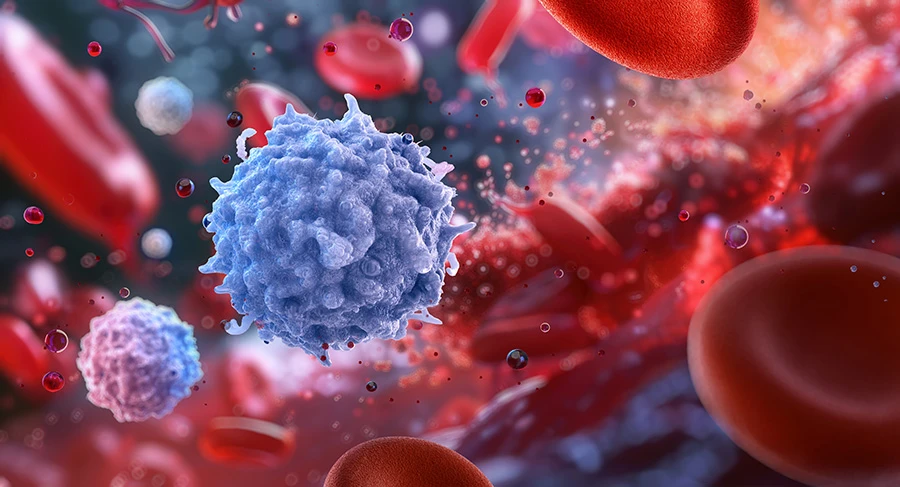
Services
Sympathetic Nerve Blocks in Singapore
Overview
What is a Sympathetic Nerve Block? Understanding the Sympathetic Nervous System Conditions Treated with Sympathetic Nerve Blocks Who is a Suitable Candidate for Sympathetic Nerve Blocks? Types of Sympathetic Nerve Blocks The Procedure Benefits and Efficacy Potential Risks and Complications Preparation and Aftercare

Dr Thor Timothy
Consultant Pain Specialist & Anaesthesiologist
MBBS (S'pore), MMed (Anaesthesiology), FFPMANZCA (USA), EDPM (Europe),FAM (S'pore)
What is a Sympathetic Nerve Block?
Sympathetic nerve blocks are medical procedures aimed at alleviating chronic pain by targeting the sympathetic nervous system—a network of nerves that controls involuntary bodily functions such as blood flow, digestion, and sweating.
By injecting anaesthetic agents near specific nerve clusters, these blocks can interrupt pain signals and provide relief for various conditions. These blocks can serve both diagnostic and therapeutic purposes, helping to identify the source of pain and providing relief.

Understanding the Sympathetic Nervous System
The sympathetic nervous system is part of the autonomic nervous system, which manages involuntary functions. It plays a crucial role in the body's "fight or flight" response, regulating heart rate, blood pressure, and blood vessel constriction. When this system becomes overactive or dysfunctional, it can lead to chronic pain syndromes and other disorders.
Conditions Treated with Sympathetic Nerve Blocks
Sympathetic nerve blocks are utilized to manage various pain conditions, including:
Complex Regional Pain Syndrome (CRPS): A chronic pain condition typically affecting an arm or leg, often developing after an injury or surgery.
Peripheral Vascular Disease: A circulation disorder that causes blood vessels outside the heart and brain to narrow, block, or spasm.
Raynaud's Syndrome: A condition characterized by spasms in the blood vessels of the fingers and toes, leading to color changes, numbness, and pain.
Hyperhidrosis: Excessive sweating due to overactive sympathetic nerves.
Herpes Zoster (Shingles): Nerve pain following a shingles outbreak, known as postherpetic neuralgia.
Cancer Pain: Certain types of chronic abdominal or pelvic pain associated with cancer.

Who is a Suitable Candidate for Sympathetic Nerve Blocks?
Sympathetic nerve blocks may be appropriate for individuals who:
Experience Chronic Pain: Particularly those with pain conditions linked to the sympathetic nervous system, such as CRPS or Raynaud's syndrome.
Have Not Responded to Conservative Treatments: Patients who have found little relief from medications, physical therapy, or other non-invasive therapies.
Require Diagnostic Clarification: Those needing confirmation of the sympathetic nervous system's involvement in their pain condition.
A thorough evaluation by a doctor is essential to determine if sympathetic nerve blocks are appropriate, considering the individual's medical history and specific symptoms.
Types of Sympathetic Nerve Blocks
The type of sympathetic nerve block administered depends on the location of the pain:
Lumbar Sympathetic Block: Targets the sympathetic nerves in the lower back to address pain in the legs or lower extremities.
Stellate Ganglion Block: Focuses on the sympathetic nerves in the neck region to treat pain in the upper extremities, head, or neck.


The Procedure
Under the guidance of imaging techniques such as fluoroscopy or ultrasound, a healthcare provider inserts a needle near the targeted sympathetic nerve cluster. Once the correct position is confirmed, an anesthetic solution is injected to block the nerve signals. The procedure typically takes less than 30 minutes, and patients may experience immediate pain relief.
Benefits and Efficacy
Sympathetic nerve blocks can provide significant pain relief, improve mobility, and enhance the quality of life for individuals suffering from chronic pain conditions. The duration of relief varies; some patients may experience temporary alleviation, while others enjoy long-term benefits, especially with repeated treatments.


Potential Risks and Complications
While generally safe, sympathetic nerve blocks carry potential risks, including:
Infection: At the injection site.
Bleeding: Particularly in patients with bleeding disorders.
Nerve Injury: Leading to increased pain or numbness.
Allergic Reactions: To the anesthetic used.
It's essential to discuss these risks with your healthcare provider to make an informed decision.
Preparation and Aftercare
Before the procedure, patients may be advised to:
Fast: Avoid eating or drinking for several hours.
Adjust Medications: Temporarily discontinue certain medications as directed.
Post-procedure, patients should:
Rest: Limit physical activity for the remainder of the day.
Monitor: Observe the injection site for signs of infection or complications.
Follow-Up: Attend scheduled appointments to assess the effectiveness and determine if additional blocks are needed.

GET IN TOUCH
Contact Us Today
For more information about our services, or to make an appointment, please reach out to us. We will get back to you as soon as possible.

Frequently Asked Questions
Yes, sympathetic nerve blocks can also be used to treat conditions like excessive sweating (hyperhidrosis) and certain circulatory disorders by modulating the sympathetic nervous system's activity.

Our Sympathetic Nerve Block Specialist in Singapore
Dr Thor Timothy
Consultant Pain Specialist & Anaesthesiologist
MBBS (S’pore), MMed (Anaesthesiology), FFPMANZCA, FIPP (USA), EDPM (Europe), FAM (S’pore)
MBBS (S’pore), MMed (Anaesthesiology), FFPMANZCA, FIPP (USA), EDPM (Europe), FAM (S’pore)
Accreditations & Qualifications:
Bachelor of Medicine, Bachelor of Surgery (Singapore)
Master of Medicine in Anaesthesiology (Singapore)
Fellow of the Faculty of Pain Medicine, Australian & New Zealand College of Anaesthetists
Fellow of Interventional Pain Practice (USA)
European Diploma in Pain Medicine
Fellow of the Academy of Medicine, Singapore
Dr Thor Timothy is a Consultant anaesthesiologist and pain specialist in Singapore with nearly 20 years of medical experience, including over a decade in pain medicine. Formerly the Director of Acute Pain Services at Singapore General Hospital, he is highly skilled in performing sympathetic nerve blocks and other minimally invasive procedures that relieve chronic nerve pain and improve circulation. He holds multiple international pain medicine qualifications and is dedicated to delivering compassionate, multidisciplinary care tailored to each patient’s needs.
